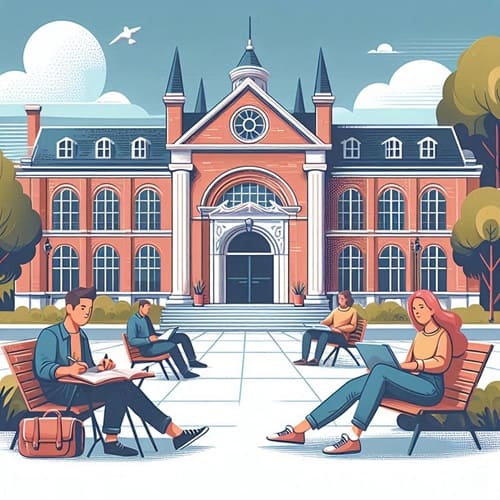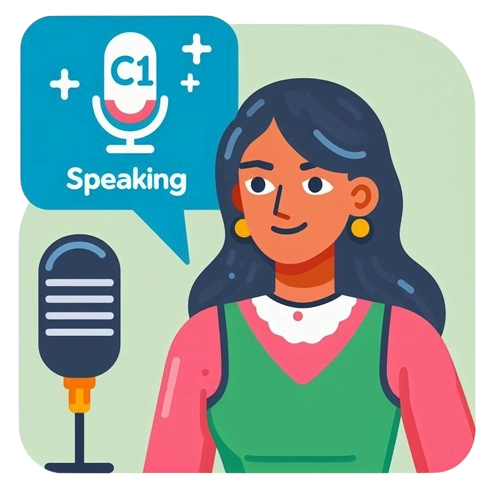Cambridge C1 Advanced CAE Speaking: Practice Test Questions and Answers
Table of Contents:
Sample Question and Answers
1. Technology
Part 1: Interview
1. *How has technology changed the way people communicate in the last decade?*
– “Technology has transformed communication, making it more instant and global. Social media platforms and messaging apps allow people to connect, share, and communicate in real-time.”
2. *In what ways do you think technology has improved or hindered work-life balance?*
– “Technology has improved work efficiency but also blurred the lines between work and personal life. While it enables remote work, it’s crucial to establish boundaries for a healthy work-life balance.”
3. *How can advancements in technology impact healthcare delivery?*
– “Advancements in technology can enhance healthcare delivery through telemedicine, remote monitoring, and data-driven diagnostics. This improves accessibility and efficiency in patient care.”
4. *Discuss the ethical considerations of using artificial intelligence in decision-making processes.*
– “The ethical use of AI in decision-making raises concerns about bias, accountability, and transparency. Striking a balance between technological advancement and ethical considerations is crucial.”
5. *How do you see the future of technology shaping the way we learn new skills?*
– “The future of technology in learning is promising, with online courses, virtual reality, and interactive platforms revolutionizing skill acquisition. It offers flexibility and personalized learning experiences.”
Part 2: Long Turn
1. *Discuss the potential societal impacts of widespread use of virtual reality technology.*
– “Widespread use of virtual reality technology has the potential to reshape societal norms by transforming entertainment, education, and even therapeutic experiences. It fosters immersive, engaging interactions.”
2. *Talk about the role of technology in addressing global challenges, such as the recent pandemic.*
– “Technology played a pivotal role in addressing the recent pandemic by facilitating remote work, online learning, and vaccine development. It highlights its potential in solving global challenges.”
3. *How can technology be harnessed to improve accessibility for people with disabilities?*
– “Technology can improve accessibility by offering assistive devices, screen readers, and adaptive software. It empowers individuals with disabilities, facilitating greater independence and inclusion.”
4. *Analyze the effects of social media on political discourse and public opinion.*
– “Social media has a profound impact on political discourse, shaping public opinion and providing a platform for diverse voices. However, it also raises concerns about misinformation and echo chambers.”
5. *In what ways can technology contribute to environmental conservation efforts?*
– “Technology contributes to environmental conservation through data monitoring, sustainable practices, and innovations like clean energy. It provides tools to address and mitigate environmental challenges.”
Part 3: Collaborative Task
1. *Debate the ethical considerations surrounding the development and use of autonomous vehicles.*
– “The ethical considerations of autonomous vehicles involve safety, accountability, and job displacement. Balancing technological progress with ethical responsibility is crucial for their widespread adoption.”
2. *Plan and discuss the advantages and disadvantages of remote work facilitated by technology.*
– “Remote work, facilitated by technology, offers flexibility but raises concerns about isolation and blurred work-life boundaries. Finding a balance that maximizes benefits while addressing drawbacks is essential.”
3. *How can technology promote inclusivity in education for diverse learners?*
– “Technology promotes inclusivity in education by providing tailored resources, adaptive technologies, and interactive platforms. It addresses diverse learning needs and fosters equal opportunities for all.”
4. *Discuss the impact of social media algorithms on shaping public opinion.*
– “Social media algorithms play a significant role in shaping public opinion by curating content. While it provides personalized experiences, it also raises concerns about filter bubbles and polarization.”
5. *Explore the role of technology in bridging the digital divide between urban and rural areas.*
– “Technology can bridge the digital divide by expanding internet access, providing digital literacy programs, and supporting infrastructure development. It aims to ensure equitable opportunities for urban and rural populations.”
Part 4: Discussion
1. *Explore the ethical implications of data privacy in the age of big data.*
– “Data privacy in the age of big data raises ethical concerns about individual rights, consent, and the responsible use of personal information. Striking a balance between innovation and privacy is essential.”
2. *Discuss the role of technology in promoting global connectivity and understanding.*
– “Technology fosters global connectivity by enabling communication and collaboration across borders. It plays a crucial role in fostering mutual understanding and breaking down geographical barriers.”
3. *How can technology contribute to disaster preparedness and response?*
– “Technology contributes to disaster preparedness and response through early warning systems, real-time data monitoring, and communication tools. It enhances efficiency in mitigating and managing disasters.”
4. *Analyze the impact of online platforms on traditional forms of media.*
– “Online platforms have transformed traditional media by providing immediate access to news and content. This shift challenges traditional media models while offering new avenues for information dissemination.”
5. *Discuss the ethical considerations of using technology to enhance human physical and cognitive abilities.*
– “The ethical considerations of enhancing human abilities through technology involve issues of consent, equality, and potential social divides. Ethical frameworks must guide the responsible development and use of such technologies.”
Certainly! Let’s provide brief sample answers for all the questions in each section for the other topics: Environment, Education, Globalization, and Health and Well-being.
2. Environment
Part 1: Interview
1. *What steps do you think individuals can take to reduce their carbon footprint?*
– “Individuals can reduce their carbon footprint by adopting eco-friendly practices like using public transportation, recycling, conserving energy, and supporting sustainable products.”
2. *In what ways can technology contribute to environmental conservation efforts?*
– “Technology contributes to environmental conservation through innovations like renewable energy, monitoring systems, and eco-friendly solutions. These advancements support sustainable practices.”
3. *How do you see the role of renewable energy sources in addressing climate change?*
– “Renewable energy sources play a crucial role in addressing climate change by reducing dependence on fossil fuels. They offer cleaner alternatives, mitigating the impact of greenhouse gas emissions.”
4. *Discuss the impact of climate change on biodiversity and ecosystems.*
– “Climate change poses threats to biodiversity and ecosystems through habitat loss, altered migration patterns, and increased risks of extinction. Conservation efforts are vital to safeguard our planet’s biodiversity.”
5. *What role should governments play in regulating and promoting sustainable practices?*
– “Governments play a pivotal role in regulating and promoting sustainable practices through policy frameworks, incentives for eco-friendly industries, and public awareness campaigns.”
Part 2: Long Turn
1. *Discuss the potential consequences of climate change on global migration patterns.*
– “Climate change can lead to global migration patterns due to rising sea levels, extreme weather events, and disruptions to agriculture. This necessitates international collaboration to address resulting challenges.”
2. *Talk about innovative solutions for reducing plastic pollution in oceans.*
– “Innovative solutions for reducing plastic pollution include alternatives to single-use plastics, recycling initiatives, and technologies to clean up ocean debris. Collective efforts are crucial to combat this environmental issue.”
3. *Explore the challenges and benefits of transitioning to a circular economy.*
– “Transitioning to a circular economy presents challenges in changing consumption patterns but offers benefits like resource efficiency, reduced waste, and environmental sustainability. It requires a shift in mindset and policy support.”
4. *Discuss the role of individual consumer choices in environmental conservation.*
– “Individual consumer choices play a significant role in environmental conservation. Choosing sustainable products, reducing waste, and supporting environmentally conscious businesses contribute to positive ecological impacts.”
5. *Analyze the impact of urbanization on local ecosystems and biodiversity.*
– “Urbanization impacts local ecosystems and biodiversity by altering landscapes and habitats. Sustainable urban planning is essential to minimize negative effects and promote coexistence with nature.”
Part 3: Collaborative Task
1. *Plan and discuss policies to promote sustainable agriculture and reduce deforestation.*
– “Policies promoting sustainable agriculture should focus on agroecology, reforestation, and incentivizing eco-friendly farming practices. Addressing deforestation requires strict regulations and community involvement.”
2. *Debate the role of individuals versus governments in addressing environmental issues.*
– “The debate over individuals versus governments in addressing environmental issues centers on the need for both. Individuals can make sustainable choices, but effective policies and regulations are crucial for broader impact.”
3. *How can international collaboration help combat global environmental challenges?*
– “International collaboration is vital in combating global environmental challenges. Shared resources, knowledge exchange, and joint efforts can address issues like climate change, biodiversity loss, and pollution.”
4. *Discuss the role of technology in monitoring and mitigating environmental pollution.*
– “Technology plays a crucial role in monitoring and mitigating environmental pollution through sensors, data analytics, and pollution control technologies. Innovation in this field is essential for a sustainable future.”
5. *Explore the impact of climate change on the availability of freshwater resources.*
– “Climate change impacts the availability of freshwater resources through altered precipitation patterns and increased evaporation. Sustainable water management practices are essential to address this challenge.”
Part 4: Discussion
1. *Discuss the role of public awareness campaigns in promoting environmental conservation.*
– “Public awareness campaigns play a vital role in promoting environmental conservation by educating individuals, shaping behaviors, and fostering a collective sense of responsibility towards the environment.”
2. *Explore the ethical considerations of eco-tourism in fragile ecosystems.*
– “Eco-tourism raises ethical considerations related to environmental impact, conservation practices, and cultural sensitivity. Sustainable practices and responsible tourism are essential to minimize negative effects.”
3. *Debate the trade-offs between economic development and environmental conservation.*
– “The debate over trade-offs between economic development and environmental conservation involves balancing progress with sustainable practices. Finding solutions that prioritize both aspects is crucial for long-term well-being.”
4. *Discuss the impact of climate change on indigenous communities and their traditional practices.*
– “Climate change disproportionately impacts indigenous communities, affecting traditional practices, livelihoods, and cultural heritage. Supporting indigenous knowledge and resilience is crucial in addressing these challenges.”
5. *Explore the role of international agreements in protecting endangered species and habitats.*
– “International agreements play a critical role in protecting endangered species and habitats by fostering collaboration, setting, conservation standards, and providing a framework for collective action on a global scale.”
3. Education
Part 1: Interview
1. *How has technology influenced the way education is delivered and received?*
– “Technology has revolutionized education by enabling online learning, interactive resources, and personalized experiences. It has expanded access to education globally, making learning more flexible and engaging.”
2. *Discuss the role of standardized testing in assessing students’ academic proficiency.*
– “Standardized testing aims to measure academic proficiency but has drawbacks, including stress and limited assessment of holistic skills. Exploring alternative assessment methods can provide a more comprehensive view of students’ abilities.”
3. *In what ways can educators foster creativity and critical thinking in the classroom?*
– “Educators can foster creativity and critical thinking by incorporating interactive activities, problem-solving exercises, and encouraging diverse perspectives. Creating an environment that values curiosity enhances students’ learning experience.”
4. *Explore the challenges and benefits of implementing technology in early childhood education.*
– “Implementing technology in early childhood education presents challenges like screen time concerns, but it also offers interactive learning opportunities. Balancing technology use with hands-on experiences is essential for effective learning.”
5. *How can educational systems address the disparities in access to quality education?*
– “Addressing disparities in access to quality education involves equitable funding, teacher training, and policies that prioritize inclusivity. Ensuring every student has equal opportunities requires systemic changes in educational systems.”
Part 2: Long Turn
1. *Talk about the impact of standardized testing on students’ mental health.*
– “Standardized testing, while assessing academic proficiency, can negatively impact students’ mental health due to pressure and stress. Exploring alternative assessment methods that consider holistic well-being is essential.”
2. *Discuss the potential benefits and drawbacks of incorporating technology in language learning.*
– “Incorporating technology in language learning offers benefits such as interactive platforms but may have drawbacks like over-reliance on digital tools. A balanced approach that combines technology with traditional methods can enhance language acquisition.”
3. *Explore the role of extracurricular activities in enhancing students’ overall development.*
– “Extracurricular activities play a vital role in enhancing students’ overall development by fostering teamwork, leadership, and creativity. They complement academic learning and contribute to a well-rounded education.”
4. *How can educational institutions adapt to the needs of diverse learners?*
– “Adapting to the needs of diverse learners involves creating inclusive curricula, providing support services, and recognizing different learning styles. Tailoring education to individual needs promotes an environment of equal opportunity.”
5. *Discuss the impact of socioeconomic factors on students’ academic performance.*
– “Socioeconomic factors significantly impact students’ academic performance, affecting resources, access to educational support, and opportunities. Implementing interventions that address these disparities is crucial for creating an equitable educational landscape.”
Part 3: Collaborative Task
1. *Debate the role of standardized testing in assessing teacher effectiveness.*
– “The role of standardized testing in assessing teacher effectiveness is debated, considering factors such as students’ individual circumstances and the need for a more holistic evaluation of teaching methods.”
2. *Plan and discuss strategies for incorporating critical thinking skills into the education system.*
– “Incorporating critical thinking skills into the education system involves curriculum development, teacher training, and creating a classroom culture that encourages questioning and independent thought.”
3. *Discuss the benefits and challenges of online learning platforms in higher education.*
– “Online learning platforms in higher education offer benefits like flexibility but present challenges such as digital accessibility. Balancing these aspects ensures an inclusive and effective learning environment.”
4. *Explore the impact of cultural diversity in classrooms on students’ learning experiences.*
– “Cultural diversity in classrooms enriches students’ learning experiences by fostering a global perspective. However, it also requires strategies to address potential cultural barriers and ensure inclusive education.”
5. *Debate the role of standardized testing in college admissions.*
– “The role of standardized testing in college admissions is debated due to concerns about fairness and its ability to accurately reflect students’ abilities. Exploring alternative admission criteria can provide a more comprehensive evaluation.”
Part 4: Discussion
1. *Explore the impact of online education on traditional brick-and-mortar institutions.*
– “Online education impacts traditional institutions by offering alternatives, but it also raises questions about the future of physical campuses and the need for adaptability in the evolving educational landscape.”
2. *Discuss the ethical considerations of using artificial intelligence in educational technologies.*
– “The ethical considerations of using AI in educational technologies involve issues of privacy, bias, and the need for transparency. Balancing technological innovation with ethical guidelines is crucial for responsible implementation.”
3. *Debate the role of standardized testing in determining educational policy and funding.*
– “The role of standardized testing in determining educational policy and funding is debated, considering its potential to drive policies but also concerns about overemphasis on testing and its impact on equitable resource allocation.”
4. *Explore the challenges and benefits of incorporating multicultural literature into school curricula.*
– “Incorporating multicultural literature into school curricula offers benefits by promoting diversity, but it may face challenges related to cultural sensitivity and the need for inclusive representation.”
5. *Discuss the impact of technology on the accessibility of education in remote or underserved areas.*
– “Technology has the potential to enhance the accessibility of education in remote or underserved areas through online platforms and digital resources. However, challenges such as infrastructure and digital literacy need to be addressed for equitable access.”
4. Globalization
Part 1: Interview
1. *How has globalization affected cultural diversity in your country?*
– “Globalization has enriched cultural diversity in my country by introducing a variety of influences. However, concerns exist about the potential erosion of traditional practices, highlighting the need for balance.”
2. *Discuss the role of global communication networks in fostering international connections.*
– “Global communication networks foster international connections by enabling instant communication and collaboration across borders. This interconnectedness promotes cultural exchange and global understanding.”
3. *In what ways has globalization influenced economic opportunities in your region?*
– “Globalization has influenced economic opportunities in my region by opening up markets, facilitating trade, and creating new business opportunities. However, challenges such as economic inequality and competition also arise.”
4. *Explore the impact of international tourism on local cultures and environments.*
– “International tourism impacts local cultures and environments by providing economic benefits but also raising concerns about cultural commodification and environmental sustainability. Responsible tourism practices are essential.”
5. *How can individuals balance embracing global influences while preserving cultural heritage?*
– “Balancing global influences and preserving cultural heritage requires individuals to appreciate diversity, engage in cultural exchange, and actively participate in initiatives that safeguard and promote local traditions.”
Part 2: Long Turn
1. *Talk about the potential benefits and challenges of a global common currency.*
– “A global common currency could simplify international trade but raises challenges such as loss of national autonomy and economic inequality. Striking a balance is crucial to harness the benefits while addressing potential drawbacks.”
2. *Discuss the impact of international trade agreements on local industries.*
– “International trade agreements impact local industries by providing opportunities for growth but also posing challenges like competition and job displacement. Developing strategies to support local industries is essential.”
3. *Explore the role of multinational corporations in shaping global economies and cultures.*
– “
Multinational corporations shape global economies and cultures by influencing consumption patterns and economic policies. Balancing their influence with ethical considerations is essential for sustainable global development.”
4. *Discuss the implications of globalized information flows on media and journalism.*
– “Globalized information flows impact media and journalism by providing immediate access to news but also raising concerns about misinformation and the dominance of certain narratives. Ensuring media literacy is crucial in navigating this landscape.”
5. *Talk about the role of international organizations in addressing global challenges.*
– “International organizations play a vital role in addressing global challenges by fostering collaboration, setting standards, and providing humanitarian aid. Their impact depends on effective global cooperation and shared goals.”
Part 3: Collaborative Task
1. *Debate the impact of globalization on income inequality in different regions.*
– “The impact of globalization on income inequality varies in different regions. While it has contributed to economic growth, it also raises concerns about unequal distribution of wealth and opportunities.”
2. *Plan and discuss strategies for promoting fair trade practices on a global scale.*
– “Promoting fair trade practices on a global scale involves creating transparent supply chains, supporting ethical certifications, and raising consumer awareness. These strategies aim to ensure equitable benefits for producers.”
3. *Discuss the role of international agreements in addressing environmental issues globally.*
– “International agreements play a crucial role in addressing environmental issues globally by establishing standards, promoting sustainable practices, and fostering cooperation. Commitment to these agreements is essential for collective environmental action.”
4. *Debate the impact of globalization on local languages and dialects.*
– “Globalization impacts local languages and dialects by promoting dominant languages and contributing to language loss. Efforts to preserve linguistic diversity involve education, cultural awareness, and language revitalization programs.”
5. *Explore the challenges and benefits of cultural exchange programs in promoting global understanding.*
– “Cultural exchange programs promote global understanding by fostering intercultural relationships, but they also face challenges related to cultural misinterpretations. Implementing effective programs that address these challenges is crucial.”
Part 4: Discussion
1. *Discuss the role of international collaboration in addressing global health crises.*
– “International collaboration plays a vital role in addressing global health crises by facilitating information sharing, resource allocation, and coordinated responses. Ensuring equity in vaccine distribution is an ongoing challenge.”
2. *Explore the impact of globalization on indigenous communities and their traditional practices.*
– “Globalization impacts indigenous communities by influencing traditional practices, introducing external influences, and posing challenges to cultural preservation. Strategies to protect indigenous rights and heritage are crucial.”
3. *Debate the influence of globalization on educational curricula and the promotion of global perspectives.*
– “Globalization influences educational curricula by promoting global perspectives but also raises concerns about cultural bias and homogenization. Ensuring diverse perspectives and cultural sensitivity in curricula is essential.”
4. *Discuss the role of international institutions in promoting peace and resolving conflicts.*
– “International institutions play a crucial role in promoting peace and resolving conflicts by providing diplomatic platforms, peacekeeping efforts, and conflict resolution mechanisms. Their effectiveness relies on global cooperation.”
5. *Explore the ethical considerations of cultural appropriation in a globalized world.*
– “Cultural appropriation in a globalized world raises ethical considerations regarding respect for diverse cultures and avoiding exploitation. Developing cultural sensitivity and promoting mutual understanding are essential in addressing these concerns.”
FAQ
The C1 Speaking Exam, part of the Cambridge C1 Advanced (CAE) certification, assesses a candidate’s ability to communicate effectively in English at an advanced level. It evaluates linguistic proficiency across various contexts, including social and professional situations. The exam comprises four parts: Interview, Long Turn, Collaborative Task, and Discussion, each designed to measure different aspects of language skills, such as fluency, accuracy, vocabulary range, and discourse management.
Effective preparation for the C1 Speaking Exam involves a combination of language practice and familiarity with the exam format. To prepare, consider engaging in regular English conversations, either with native speakers or language exchange partners. Additionally, review the exam structure and practice with sample questions. Familiarize yourself with the assessment criteria and seek feedback on your performance. You can read my comprehensive guides down below:
- Yes, for the Interview, be ready to discuss personal experiences and express opinions clearly. In the Long Turn, structure your speech coherently, emphasizing key points. In the Collaborative Task, engage actively with others, ensuring balanced participation. Finally, for the Discussion, demonstrate critical thinking, address ethical considerations, and respond thoughtfully to questions. You can read my guides here.
- Part 1
- Part 2
- Part 3
- Part 4






